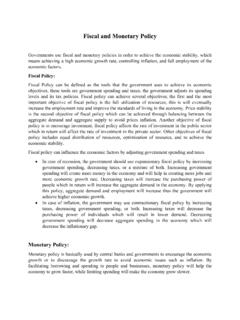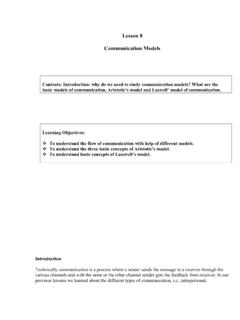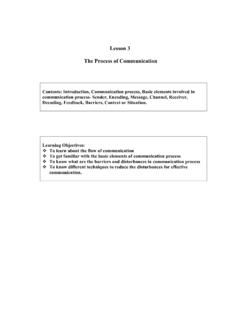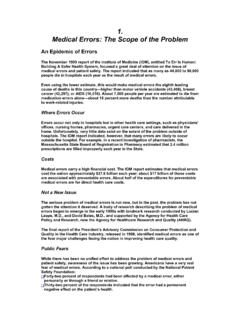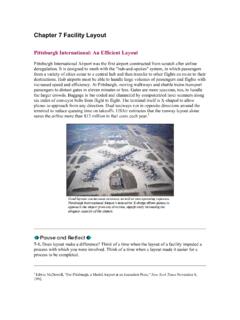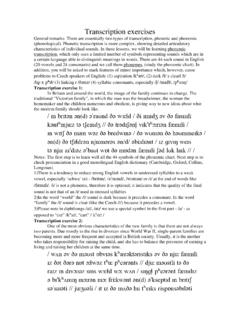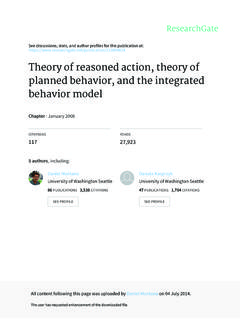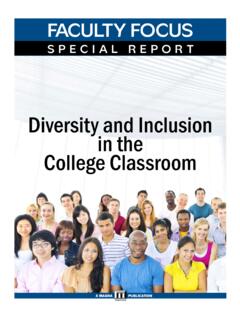Transcription of Understanding Conflict and Conflict Analysis
1 Understanding Conflict and Conflict Analysis9781412903080-FM 3/17/08 6:01 PM Page i9781412903080-FM 3/17/08 6:01 PM Page iiUnderstanding Conflict and Conflict AnalysisHo-Won JeongLos Angeles London New Delhi SingaporeSAGE9781412903080-FM 3/17/08 6:01 PM Page iii Ho-Won Jeong 2008 First published 2008 Apart from any fair dealing for the purposes of research orprivate study, or criticism or review, as permitted underthe Copyright, Designs and Patents Act, 1988, this publication may be reproduced, stored or transmitted inany form, or by any means, only with the prior permissionin writing of the publishers, or in the case of reprographicreproduction, in accordance with the terms of licencesissued by the Copyright Licensing Agency. Enquiries concerning reproduction outside those terms should besent to the Publications Ltd1 Oliver s Yard55 City RoadLondon EC1Y 1 SPSAGE Publications Teller RoadThousand Oaks, California 91320 SAGE Publications India Pvt LtdB 1/I 1 Mohan Cooperative Industrial AreaMathura RoadNew Delhi 110 044 SAGE Publications Asia-Pacific Pte Ltd33 Pekin Street #02-01 Far East SquareSingapore 048763 Library of Congress Control Number: 2007934279 British Library Cataloguing in Publication dataA catalogue record for this book is available from theBritish LibraryISBN 978-1-4129-0308-0 ISBN 978-1-4129-0309-7 (pbk)Typeset by Cepha Imaging Pvt.
2 Ltd., Bangalore, IndiaPrinted in Great Britain by Cromwell PressPrinted on paper from sustainable resources9781412903080-FM 3/17/08 6:01 PM Page ivContentsPrefaceixPart I Concepts and Analysis11 Approaches to Understanding Conflict3 The nature of conflict5 The context of defining conflict6 Socio-psychological dynamics9 Conflict situations10 Intractable conflict12 Constructive versus destructive conflict13 Root causes of conflict15 Levels of analysis16 Overview182 Conflict Analysis Framework20 Focus and elements of analysis21 Parties22 Goals24 Issues25 Interests26 Value differences27 Human needs28 Strategies, tactics, and culture29 Conflict -coping styles and orientations30 Conditions for conflict34 The phases of conflict36A Conflict context389781412903080-FM 3/17/08 6:01 PM Page vviCONTENTSC onflict intervention38 The principles of Conflict resolution39 Part II Sources and Situations413 Sources of Conflict43 Realistic versus non-realistic conflict43 The roots of conflict44 Internal psychology and Freud46 Frustration and aggression48 Relative deprivation49 Human needs51 Functional and dysfunctional conflict52 Social change53 Identity formation55 Politicization of identity57 Nationalism and the state57A contemporary state system59 Terrorism624 Conflict Situations and Behaviour64 Socio-psychological approaches to conflict65 Cooperative and competitive relationships66 Mixed motives67 Irrevocable commitments71 Features of decision making74 Attributional distortion and stereotypes75 Images76 Psychology of dehumanization78 Cognitive consistency79 Schema and information
3 Processing82 Group decision making84 Factional and bureaucratic politics86 Part III Process and Structure895 Process of Conflict91 The transformation of latent to manifest conflict91 Overall Conflict stages97 Variation patterns of Conflict phases100 The nexus of escalation, de-escalation, and re-escalation104A curvilinear path of a large Conflict system106 The nature of Conflict movements109 Regulating potential112A tipping point113 Forces of change: agency versus structure1159781412903080-FM 3/17/08 6:01 PM Page vi6 Interlinkage and Context117 The intricate web of Conflict dynamics118 Interlocking of actors: patterns of vertical alliance120 External and internal relational contexts121 Interlocking issues: convergence and divergence122 Temporal links123 Embedded conflict126 Superimposed conflict128 Focal conflict129 Diffuse conflict130 Part IV dynamics and Escalation1337 A System of Conflict Dynamics135 System perspectives135 Action reaction functions137 The modes of interaction139A threat mode of action142 Behavioural, psychological, and organizational dimensions144 Internal, external.
4 And contextual variables147 Intra-party dynamics1508 Escalation and Entrapment154 dynamics of escalation154 Psychological and behavioural aspects157A malignant interaction158A crisis mode of escalation162 Escalation and deterrence164 Strategies for controlled escalation166 Entrapment167 Self-perpetuating decision-making rules170 Internal politics and group dynamics171 The impact of group radicalization174 Part V De-escalation and Termination1779 De-escalation Dynamics179 What is de-escalation?179De-escalation process181 The conditions for de-escalation184 Ripeness and timing189 Third-party intervention194 Politics of de-escalation196 The art of coalition building198 The role of a moderate coalition202 CONTENTSvii9781412903080-FM 3/17/08 6:01 PM Page vii10 Conciliation Strategies205 Interaction patterns206 Step-by-step de-escalation208 Conciliatory actions212 Response to conciliatory gestures215 Politics for accommodation219 The role of communication220 Communication patterns in negotiation22311 Ending Conflict225 The nature of Conflict termination226 Types of Conflict ending228 The end state of conflict231 Maintaining the status quo233 Establishing new relations and institutions234An outcome matrix236 Factors affecting Conflict outcomes238 Post- Conflict relationship building241 Preventive strategies241 Ethos of Conflict resolution and transformation243 References245viiiCONTENTS9781412903080-F M 3/17/08 6.
5 01 PM Page viiiPrefaceIn International Relations (IR), there is a long tradition of research studyinginter-state behavior with a focus on decision making behavior. Back in the 1960sand 1970s, many IR scholars adopted advanced theories developed in variousfields of the social sciences to enrich our Understanding of foreign policymakers behavior in a crisis and other inter-state Conflict situations. In illustrat-ing international Conflict , our attention has been expanded to the Analysis ofinert-group dynamics , actor motivations and external constraints beyond inter-state rivalry and governmental decision making. There has been a growingdemand for new knowledge about the emergence and dynamics of many con-flicts embedded in a complex environment of national and international many of these studies respond to the necessity of reducing the risks ofunnecessary catastrophic wars, we have observed complex Conflict phenomenaat various settings along with the major changes in the international before Conflict studies were well recognized by scholars in mainstream IR,new theories and conceptual thinking about structural, psychological, commu-nicative and behavioral aspects of a Conflict process were developed byChadwick F.
6 Alger, John W. Burton, David J. Singer, Johan Galtung, TheodoreLentz, Paul Smoker, Marc Ross, Milton Esman, Anatol Rapaport, ChristopherMitchell, Janice Stein, Kenneth Boulding, Nazli Choucri, Ronald Fisher, DeanPruitt, Glen Paige, James Rosenau, Charles F. Hermann, Herbert Kelman,Morton Deutsche, Louis Kriesberg, Jurgen Dedring, and many other prominentscholars. In order to develop a major textbook in Conflict studies, it is necessaryfor us to assess the current status of our knowledge about the topic with recognition of the existing intellectual aim in this book is to provide a solid, elaborate conceptual knowledge base that helps students be better orientated toward the Analysis of contempo-rary Conflict phenomena, ranging from ethnic and other inter-group Conflict ,international terrorism, and inter-state disputes.
7 In doing so, it identifies major9781412903080-FM 3/17/08 6:01 PM Page ixtheories needed for a full grasp of real world Conflict situations, their sourcesand dynamics . I began to realize the importance of this task more, when I chairedthe admission committee of my program and reviewed many hundred files of promising applicants whose careers range from diplomats, high rankingmilitary officers to NGO many of our students aspire to have is the intellectual skills they candepend on for responding to many Conflict situations. Most importantly, thiscapacity cannot be developed without a full grasp of how each Conflict evolvesand in what context. This book is designed to help our students be preparedfor this task by devoting full attention to the process of Conflict emergence,escalation, de-escalation and settlement as well as structural characteristics ofinterlinked Conflict system, and modes of interaction between Conflict partic-ipants.
8 As an attempt to reflect past studies on behavioral, psychological, andstructural aspects of Conflict dynamics , the volume sheds light on the optionsand choices available to various actors, social psychological aspects of adver-sarial interactions, and behaviors constrained by such relational characteristicsas power symmetry or objective of student learning should focus on building the intellectualskills of Conflict diagnosis that is essential prior to any efforts to initiate con-flict settlement and resolution. In the field of Conflict studies, there has beenmuch discussion about Conflict resolution practice and skills, but research on Conflict Analysis and dynamics has been relatively less emphasized. Theintent of this manuscript is, in part, to fill the gap in providing conceptualframeworks that are needed for putting forward our questions about key international events.
9 A list of complex issues is explored to investigate a Conflict system as a dynamic single volume cannot cover every aspect of Conflict Analysis and resolu-tion, since it is a vast field of study. This manuscript does not specificallyexamine Conflict resolution practice in domestic settings nor does it cover a long list of Conflict management techniques unless they are relevant to theregulation of antagonistic relations. In addition, it does not touch upon otherthematic issues such as globalization, development, peacekeeping, environ-mental degradation, and so forth, in great detail, as a few textbooks in conflictstudies do. Although they may be helpful in Understanding broad social orinternational trends, this book s desire is to provide a more tightly integratedbody of academic knowledge about better comprehending the sources, situation, context, and process of aconflict, we can develop informed policy options.
10 Frictions in the currentworld order have created complex pictures of international decision makingprocesses. On the international scene, diverse actors emerge and play differentroles, either destructive or constructive, in the maintenance of internationalpeace and 3/17/08 6:01 PM Page xTwo decades ago, the IR field did not pay much attention to disenchantedethnic groups, warlords, and terrorist networks. Over the last decade, the IRfield has evolved to include Analysis of internal conflicts , as they spill over tointernational arenas. The US entrapment in the war in Iraq and Afghanistanillustrates the importance of factional, regional politics and agendas. The topicscovered in this project are relevant to illuminating the behavior of internationalactors, both state and I am solely responsible for any content of this book, I am intellec-tually indebted to Chadwick F.
